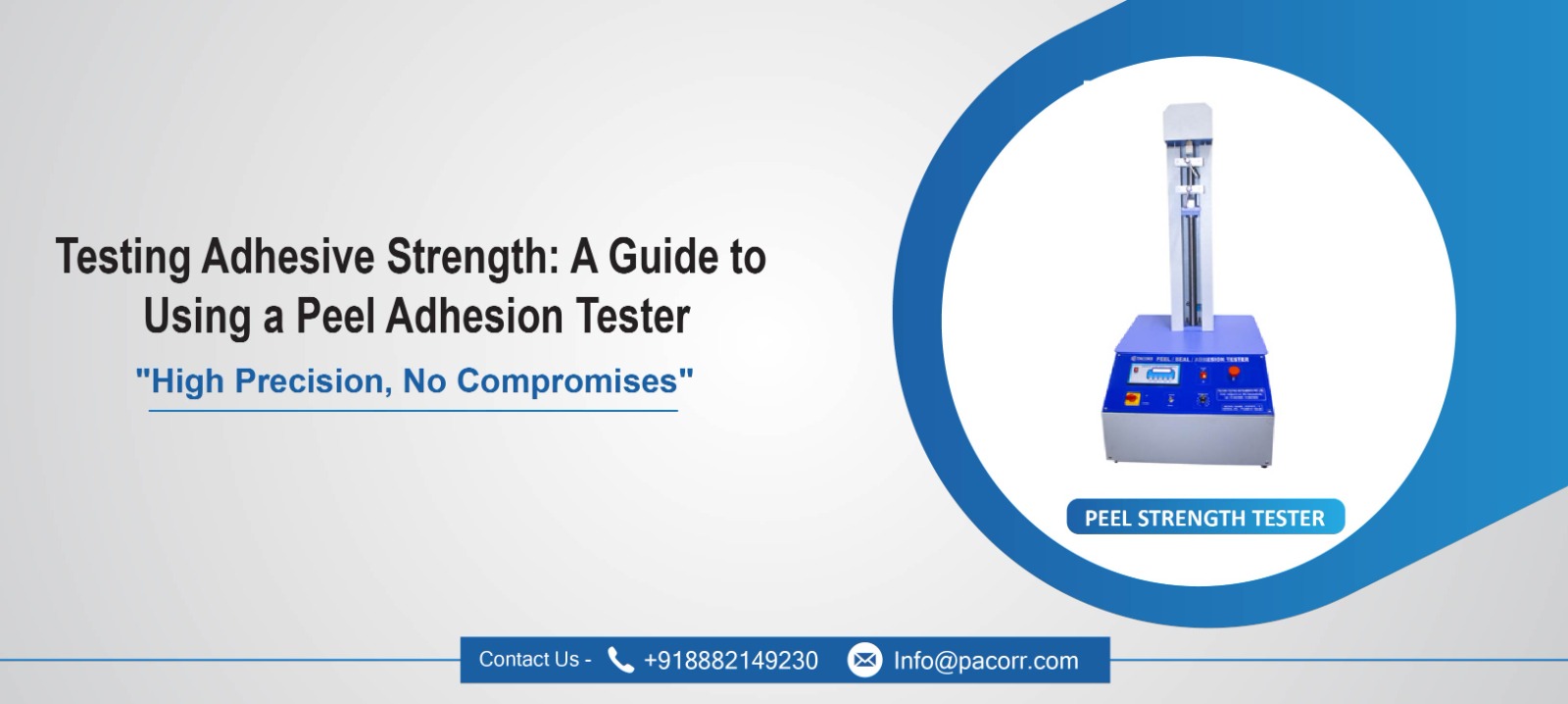
 When it comes to packaging, making sure your products are securely sealed and protected during transport and storage is key. Packaging materials' adhesive strength is crucial here. Using a peel adhesion tester can help you make sure your packaging works. Our blog will explore the importance of adhesive strength in packaging and provide a comprehensive guide to using adhesion testers.
When it comes to packaging, making sure your products are securely sealed and protected during transport and storage is key. Packaging materials' adhesive strength is crucial here. Using a peel adhesion tester can help you make sure your packaging works. Our blog will explore the importance of adhesive strength in packaging and provide a comprehensive guide to using adhesion testers.
How crucial is Adhesive Strength Testing in Packaging?
Adhesive strength is the force required to separate two bonded surfaces. In the context of packaging, it's essential to assess the adhesive strength to ensure that seals and closures remain intact under various conditions. Weak adhesive bonds can lead to package failures, resulting in product damage, contamination, or loss. Factors like temperature variations, humidity, and handling during transportation can all impact adhesive strength, making it a critical parameter to measure.
Peel Adhesion Tester: An Overview of the Machine
A peel adhesion tester is a specialized instrument designed to measure the adhesive strength of materials, including tapes, labels, films, and other packaging components. It simulates real-world scenarios by applying a controlled force to peel apart two surfaces bonded with adhesive.
Here's how to use a the tester effectively:
- Equipment Setup: Start by setting up the peel adhesion tester in a controlled environment. Ensure that the machine is calibrated and properly maintained to obtain accurate results.
- Sample Preparation: Prepare your packaging material samples by cutting them into uniform strips or pieces. It's essential to maintain consistency in sample size and shape for accurate testing.
- Test Surface Preparation: Clean and prepare the surfaces to be bonded with adhesive. Any contaminants or residues on the surface can affect the test results.
- Bonding: Apply the adhesive to one of the surfaces, following the manufacturer's instructions for application. Carefully place the two surfaces together, ensuring proper alignment.
- Testing Procedure: Place the bonded samples in the peel adhesion tester's clamps or grips. Ensure that the samples are secured tightly.
- Test Parameters: Define the testing parameters, such as the peel angle, peel rate, and dwell time. These parameters should mimic the conditions under which the packaging material will be used.
- Testing: Start the test, and the peel adhesion tester will apply a controlled force to separate the bonded surfaces. The force required to peel them apart is measured in grams per millimeter or other suitable units.
- Data Collection: Record the maximum force required to peel the surfaces apart. This value represents the adhesive strength of the packaging material.
Repeat Testing: It's a good practice to repeat the test with multiple samples to ensure consistency and reliability of the results.
Data Analysis: Analyze the data obtained from the peel adhesion tester. Compare the results with industry standards or your internal quality control standards to determine if the adhesive strength meets the requirements.
Ensuring the adhesive strength of your packaging materials is crucial for the integrity and security of your products during transportation and storage. By using a peel adhesion tester, you can accurately measure this parameter and make informed decisions about the suitability of your packaging materials. Consistent and reliable adhesive strength testing is a key component of quality control in the packaging industry, helping to prevent costly product damage and customer dissatisfaction.
Thanks to Pacorr Testing instruments, we have all the required quality testing instruments that have helped us to ensure the best quality delivered to our clients.

Danish
Fair Exports Pvt. Ltd.

